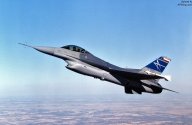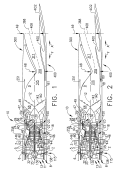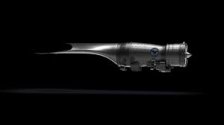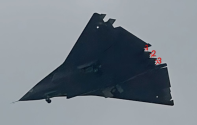You are using an out of date browser. It may not display this or other websites correctly.
You should upgrade or use an alternative browser.
You should upgrade or use an alternative browser.
Chengdu next gen combat aircraft (?J-36)
- Thread starter Blitzo
- Start date
DSI inlet has a more or less forward-swept lip. I suspect the J-36 No.2 has a DSI bump on the top, similar to the F-16 DSI test aircraft and the J-10, due to obscured by the wing.Then I suppose it's a new thing all together. Is there any chance the research papers nominated a name for these sorts?

Last edited:
Several next gen engines are under development from what I know, but the design will probably still use 3 of them anyway. Probably 3 200-ish kN class engines (likely a 3-stream ACE design)If you don't want three engines but two for the same specs you would need to design new engines. A major investment.
Another issue with this exhaust arrangement is how are they going to do a S curve in the exhaust, the flow path is now much shorter. Americans are likely going to include that in their designs judging by all the patents out of PW and GE.
I haven't come across the term "S-curve" in relation to XA102 or XA103. Are you talking about the exhaust trough? That is broadly similar to what is present on YF-23.
The pursuit of a 2D TVC solution (if they end up going with it on the final product) would be indicative of a desire to trade marginally greater maneuverability for marginally less signature reduction -- and vice versa if they went the other way.
What are the possibilities that this new exhaust configuration also hints to progress towards the intended engines? Or is it too early/too little info at this time?
What are the possibilities that this new exhaust configuration also hints to progress towards the intended engines? Or is it too early/too little info at this time?
It is unlikely that its "intended engines" (i.e.: next gen VCE/ACE) would be ready for flight testing yet on a relatively early stage EMD prototype.
Whether the new exhaust configuration reflects any difference in the powerplant between prototype no 1 and prototype no 2.... who knows. We never definitively knew what powerplants prototype no1 uses after all.
I haven't come across the term "S-curve" in relation to XA102 or XA103. Are you talking about the exhaust trough? That is broadly similar to what is present on YF-23.
The pursuit of a 2D TVC solution (if they end up going with it on the final product) would be indicative of a desire to trade marginally greater maneuverability for marginally less signature reduction -- and vice versa if they went the other way.

IIRC this is a GE patent for next generation ACE, you could clearly see a "curve" in the exhaust to reduce signature

PW's XA103 also includes rather extreme measures to reduce turbine exposure and most likely IR signature.
IMO, making J-36 more maneuverable at the expense of basically well stablished baseline(Extreme emphasis all aspect stealth and IR signature) for 6th gen as discussed in this forum is leaving a bad taste in my mouth, especially most people here have concurred maneuverability is playing less and less of a role in future air combat.
Last edited:
That type of changes you can do it with windtunneling and simulation in the modern age. every change on an physical prototype is an careful studied improvement over the previous, not just alternative testing to see how things go.maybe they're just testing buried 2D TVC vs normal 2D TVC or round nozzles? Doesn't mean they're going to go without the buried nozzles on the final design right? Or maybe it's not a complete airframe?
I'm guessing from previous comments from chinese leakers, they learnt a) that the penalty from control surfaces overcompensating for lack of thrust vectoring is too great and thus opt for a less stealthy 2D exhaust or b) I believe no. 1 also has thrust vectoring given the separate exhaust lips but such design is found to be too heavy and complex so they revert to more conventional raptor style exhaust nozzles.
Last edited:
Damn i missed this, our triangular friend is back in force. The nozzles are intriguing for starters, are we sure it's not having two engines now? The whole area looks to me like an interim setup. Hopefully sufficiently good pictures will appear for us to see all the changes, the DSIs, the nozzles etc.

